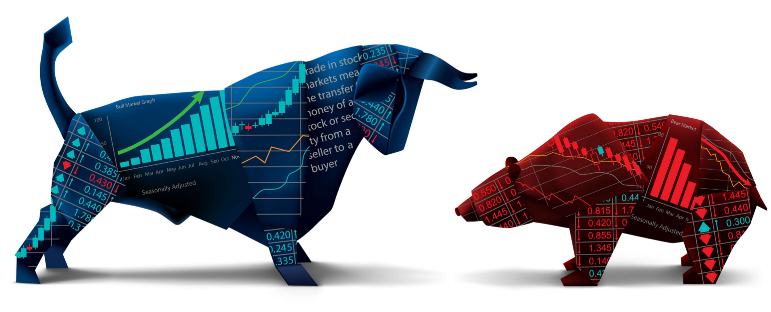Almost every day in the investment world, you will hear the words “bison” and “bear” that are used to describe the market conditions. Since the direction of the market is an important force that affects your portfolio, it is important that you must know what the meaning is and how each person affects you.

What is the Bear and Bull Market?
The word bull market and the bear market is used to explain how to invest in the stock market. In general, that is, whether it is appreciation or value reduction. At the same time, since the market is determined by the attitude of investors, these conditions also show how investors feel about the market and the subsequent trends.
A simple speech is the bull market, meaning that the market is increasing. It is imprinted by continuous increase in market share prices. During that time, investors often believe that the upward trend will continue in the long term. In general, the national economy is strong and the level of employment is at a high level.
On the other hand, the bear market is slumping. The stock price continues to decline. Resulting in a decrease in which investors believe will continue and will eventually make the thread go down. During the market, the economy is generally slowing down. And unemployment will increase when the company begins to terminate labor.
Important issues
- The cow market is a growing and economic market. While the bear market is a recession market, in which the majority of shares have a decrease in value.
- Although some investors are “rude”, but most investors are “bullish” the overall stock market has always posted rewards.
- The bear market is at risk to invest because many stocks lose value. Because it is difficult to find the lowest point of the market Most investors withdraw money from the market and sit in cash until the trend is reversed.
Characteristics of bull market and bear market
Although the cow or bear market condition is determined by the direction of the stock price, there are some characteristics that investors should be careful of. The following list describes some of these factors.
Supply and demand of securities: In the bull market, we see the demand.
- Evaluation of market changes
Important factors that indicate that the market is a bull market or the bear is not just a response to the market twitching to specific events only.
- The timing in the market is perfect.
Not moving in the market for a long time. However, it may look like a cow or bear. Sometimes the market may face sluggishness while trying to find directions. In this case, a set of moves up and down actually will cancel the actual profit and loss resulting in the flat market trend.
Things to do in each market
In the bull market, what is suitable for investors is to take advantage of a higher price by buying the early stocks of the trend, if possible, then sell them when they reach the peak.
During the bull market, any loss should be less and temporary. In general, investors can invest in equity securities confidently. And there is the probability that will receive higher returns
In the bear market, however, the chances of loss are more due to the price, there is a continuous loss of value and in the end, often not visible. Even if you decide to invest in the hope that there will be a change, you are likely to lose before recovery. Therefore, most profitability will occur in short sales or safe investments such as securities with fixed income.
Investors may turn to the protected stock, which will be a little affected by the market trend changes and therefore stability, both in grief, economic, and the boom cycle. These are industries such as utilities, which are often owned by the government and are essential that people buy, regardless of economic conditions.
Bottom line
The bear and bull market will have a huge influence on your investment, so it’s a good idea to take a moment to determine whether the market is doing well.







